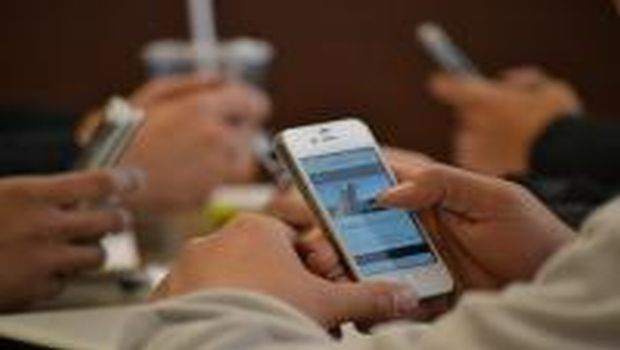Research Finds That Cell Phones Reflect Our Personal Microbiome


Scientists have found that our cell phones reflect the personal microbial world of their owners with potential implications for their use as bacterial and environmental sensors.
Smartphones are everywhere, and they may be smarter than you think. Our cell phones actually reflect the personal microbial world of their owners, with potential implications for their use as bacterial and environmental sensors, according to new research. New research focused on the personal microbiome – the collection of microorganisms on items regularly worn or carried by a person - demonstrates the significant microbiological connection we share with our phones.
To test our biological connection with phones, University of Oregon researchers sequenced microbes from the dominant-hand index fingers and thumbs of 17 subjects and from the touchscreens of their smartphones, during a recent Robert Wood Johnson Foundation workshop in Princeton, New Jersey. The study found smartphones closely resembled the microbiome sampled from their owner's finger, with 82 percent of the most common bacteria on participants' fingers also found on their phones.
Interestingly, women were found to be more closely connected, microbiologically speaking, to their phones than were men. Although men and women were both statistically similar to their own phones, the relationship was stronger for women than for men. The findings appear in the June 24 issue of the online open-access, peer-reviewed journal PeerJ.
The most commonly found bacteria were from three genera that are ubiquitous on and in humans: Streptococcus, which is commonly found in the mouth, and Staphylococcus and Corynebacterium, both common skin residents.
The analyses, utilizing short-read 16S sequencing, focused on categorizing whole microbial communities rather than identifying pathogens. The findings emerged from sequences representing more than 7,000 different types of bacteria found in the 51 samples taken from fingers and phones.
"The sample size was small, but the findings, while intuitive, were revealing," says lead author James F. Meadow, a postdoctoral researcher in the Biology and the Built Environment Center at the University of Oregon.
"This project was a proof-of-concept to see if our favorite and most closely held possessions microbially resemble us. We are ultimately interested in the possibility of using personal effects as a non-invasive way to monitor our health and our contact with the surrounding environment," he said.
Future uses could include real-time sequencing technology to screen the smartphones of healthcare workers and hospital visitors, rather than the people themselves, for possible exposure to pathogens that could be carried into or out of a medical facility. Also, phones are ubiquitous and come into direct contact with so much of a person's environment that they might also be valuable for analyzing exposure to "biological threats or unusual sources of environmental microbes that don't necessarily end up integrated into our human microbiome," the researchers note.
The findings also present opportunities for future scientific use, as phones could be used for easy and non-invasive sampling in large-scale microbial studies. The next step is to expand this research to develop and test predictions about the spread of microbiota among people and over time, particularly in healthcare facilities where hospital acquired infections impact about 1 in every 20 patients.
Source: PeerJ
Redefining Competency: A Comprehensive Framework for Infection Preventionists
December 19th 2024Explore APIC’s groundbreaking framework for defining and documenting infection preventionist competency. Christine Zirges, DNP, ACNS-BC, CIC, FAPIC, shares insights on advancing professional growth, improving patient safety, and navigating regulatory challenges.
Addressing Post-COVID Challenges: The Urgent Need for Enhanced Hospital Reporting Metrics
December 18th 2024Explore why CMS must expand COVID-19, influenza, and RSV reporting to include hospital-onset infections, health care worker cases, and ER trends, driving proactive prevention and patient safety.
Announcing the 2024 Infection Control Today Educator of the Year: Shahbaz Salehi, MD, MPH, MSHIA
December 17th 2024Shahbaz Salehi, MD, MPH, MSHIA, is the Infection Control Today 2024 Educator of the Year. He is celebrated for his leadership, mentorship, and transformative contributions to infection prevention education and patient safety.
Pula General Hospital Celebrates Clean Hospitals
December 16th 2024Learn how Pula General Hospital in Croatia championed infection prevention and environmental hygiene and celebrated Clean Hospitals Day to honor cleaning staff and promote advanced practices for exceptional patient care and safety.
Understanding NHSN's 2022 Rebaseline Data: Key Updates and Implications for HAI Reporting
December 13th 2024Discover how the NHSN 2022 Rebaseline initiative updates health care-associated infection metrics to align with modern health care trends, enabling improved infection prevention strategies and patient safety outcomes.